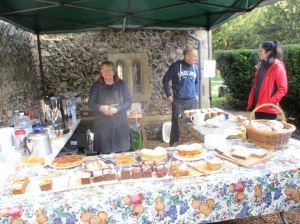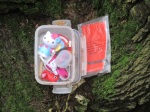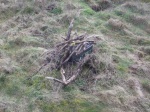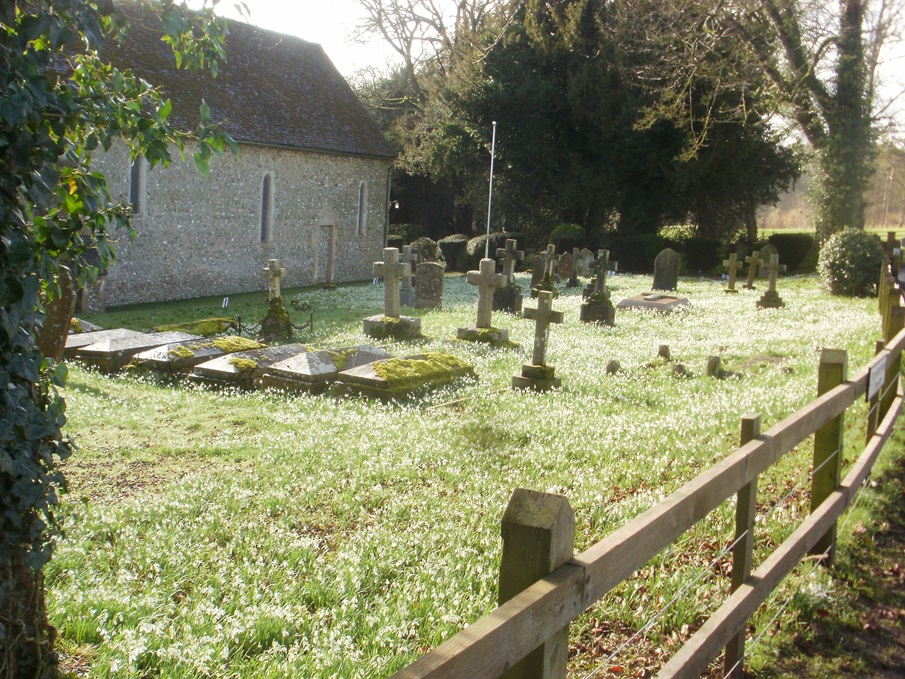Hello, Mrs Hg137 here.
Today’s walk and geocaching adventure took us on a circular route, taking in parts of the Ridgeway and the Chiltern Way and, of course, the snowdrops at St Botolph’s Church. We’d passed the church while walking the Ridgeway back in the summer and had planned to return for the Snowdrop Festival.
There are lots of published snowdrop walks, but we decided to invent our own (similar) version to include some geocaches on our way. Parking in a large layby on a country road, we set off south across Ewelme Downs. We were caught up and passed by two lady muggles (non-geocachers) and their excitable spaniel, Banjo, so paused to give them an explanation of geocaching; otherwise, they might have wondered what on earth we were up to, poking around in bushes and behind trees!



We turned east, and climbed gently towards the edge of the Swyncombe Estate, and onto the bridleway known as Ladies Walk. There were a surprising number of walkers about, and we had snowdrop themed chats with several of them.
Joining the Ridgeway, we reached Swyncombe Church. Crikey, it was busy, we were glad we hadn’t tried to park here, there was no space on the narrow lane. And the people … so many!
But it was obvious why everyone was here. The churchyard was carpeted by snowdrops and aconites. We did several circuits of the churchyard, admiring both the tens of thousands of flowers, and the ginormous pieces of delicious cake on sale by the church. It was lunchtime and we were tempted, very tempted … but we’d brought a picnic lunch with us, and removed ourselves to a quieter corner of the churchyard for a peaceful break.

After a few more circuits of the churchyard and many more pictures of the snowdrops, we moved off for the return leg of out walk. Our morning’s caching had been part of the Ridgeway Ramble series of caches, while the afternoon was planned to be a number of puzzle caches that we’d solved over the previous few days. Puzzle caches tend to be found less often than standard caches, and that also means they are harder to find (less logs to go on, no tell-tale ‘cacher’s path’ to the location). We found five, distributed along a steep down-and-up section of the Ridgeway and the Chiltern Way.
We stopped to chat to two walkers: yes, they’d seen the snowdrops (of course!) and they were also checking a route for a Ramblers walk in the next few days, which will, unsurprisingly, pass the snowdrops. Our route now followed the wooded northern edge of Swyncombe Downs, along the line of a medieval earthwork, with expansive views across Oxfordshire to the north. The woods gave way to a grassy hilltop, then we plunged down a steep descent through more woodland – skidding to a stop a couple of times to plunge into the undergrowth for a late cache or two – then we emerged back into full daylight at the start point of the walk.
We’d saved one special cache for last: one from the ‘Victoria’s Post Box’ series, which celebrate the diminishing number of working postboxes from Queen Victoria’s reign. We’d done copious online research and had come up with some coordinates, not too far from the box itself. Parking close-ish to the final location, we went for a walk, and then spent a while crashing about in the undergrowth to no avail. We read some old logs and came up with another location (well, exactly where we’d first looked). This time a more dedicated search and feel (and a torch) located the container. After the 30 minutes of angst locating the cache, this was our favourite for the day … apart from those fantastic snowdrops!
Here are some of the caches we found:




























